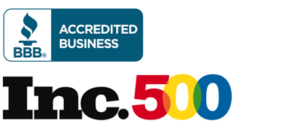
$44,326profit.
$133,758profit.
He learned how to leverage $300k in On-Demand funding at 0% interest.
Want the FULL playbook? Get this FREE Training
$133,758profit.
He learned how to leverage $300k in On-Demand funding at 0% interest.
Want the FULL playbook?
Get this FREE Training

Apply
Fill out this simple application

Consultation
1-on-1 business consultantion

Funding
Funding as soon as 7 days
StartupFundingApplication
- (844) 220-8826
- info@midwestcorporatecredit.com

Many Americans don’t think twice when they use their credit cards for purchasing various items. Credit cards are nothing other than personal lines of credit that enable these individuals to access additional cash for meeting various personal or household-related needs. Similarly, when business owners require additional funds for meeting various short-term capital needs, they will often require start-up business credit. Business lines of credit are nothing other than revolving credit lines. They enable small and midsize business owners to meet their short-term capital requirements.
An Overview of Business Lines of Credit (LOCs)
Larger businesses usually have adequate reserves of capital to tide over their capital requirements. Small business owners do not have this luxury. So, they often utilize business LOCs for meeting their daily cash flow requirements. Business LOCs refer to revolving loans given as working capital or start-up business credit. Business owners can use this credit to:
- Purchase inventory
- Repair damaged equipment
- Finance marketing or promotional campaigns or,
- Meet their payroll requirements
There are two categories of business LOCs. These comprise:
- Secured Business LOCs: To avail of these LOCs, business owners will need to pledge certain assets. These assets will serve as collaterals for securing the loan. LOCs typically denote short-term liabilities. Hence, lenders will require businesses to pledge short-term assets. Examples of such short-term assets include accounts receivable and inventory. If the borrower cannot repay the loan, the lender will assume ownership of the collaterals. Thereafter, the lender can liquidate the collaterals for repaying the outstanding amount.
- Unsecured Business LOCs: These LOCs do not require business owners to pledge their assets. As a result, these LOCs will present a greater degree of risk to the lenders. To offset this risk, lenders will charge higher interest rates. In addition, they could offer lower amounts of credit as opposed to secured LOCs. Qualifying for these LOCs is not easy. In many cases, business owners will need to have a positive track record and a good credit rating to obtain these LOCs.
Why It’s Better to Utilize Revolving Credit Instead of Taking Business Term Loans
As mentioned earlier, business LOCs offer greater levels of flexibility. Lenders give businesses a specific credit limit. As such, business owners can use the funds on offer whenever the need arises. In addition, they have the freedom to use the working capital or start-up business credit for purchasing anything of their choosing. Thereafter, the business owner will need to make regular payments, based on the outstanding balance on the LOC.
In contrast, term loans refer to fixed amounts of funds. Lenders provide these funds to borrowers for a pre-determined term. The business owner takes the entire funds in one lump sum. Thereafter, the business owner will need to make the repayments based on a pre-arranged schedule. This repayment schedule will usually remain uniform throughout the tenure of the loan. In some cases, lenders only provide these loans for specific purchases i.e. purchasing buildings, vehicles, equipment that the business requires.
Revolving credit often works out to be more beneficial for business owners than term loans because:
- Revolving credit provides working capital or start-up business credit for meeting short-term requirements
- Business owners can use revolving credit for any business purpose unlike loans that business owners can use only for specific purposes e.g. equipment loans etc.
- Business owners can use the revolving credit at any time
- Business owners can decide when they need to use their revolving credit – including how much or how little they want to borrow – unlike loans where they have to take a lump sum payment
- Revolving LOCs keep replenishing as the borrower repays the amount used, unlike term loans where a borrower will need to re-apply for a fresh loan after repaying the existing one
- Borrowers only pay interest on the amount they use rather than on the entire credit limit, unlike term loans where interest becomes payable on the entire loan amount
- Lenders charge interest on revolving LOCs in 30-day cycles, whereas they charge interest on a daily basis in the case of loans
- Revolving credit typically offers flexible payment terms where borrowers can keep utilizing the LOC by repaying a minimum amount as opposed to loans that require the payment of the entire monthly installment
- Revolving credit enables business owners to keep their personal and business-related expenses separate
- Revolving credit enables business owners to source their funding needs before their businesses actually require it, which is useful because many businesses have a cyclical nature
- Revolving credit helps the business build business credit as opposed to loans where repaying a term loan and applying for a fresh loan will dent the credit score of the business
- Borrowers can enhance their credit limits with time with revolving credit, while the only way to obtain additional credit with loans is to re-apply for a fresh loan and,
- Revolving credit offers comparable interest rates for unsecured loans as opposed to unsecured term loans
Do Your Require a Revolving LOC for Your Business?
Contrary to popular perception, small businesses have played a major role in helping the US recover from the recession. According to the US Small Business Administration (SBA), small businesses helped create 60 percent of the net new jobs in the period from mid-2009 to mid-2013. A study by Jessie Hagen of US Bank revealed that 82 percent of businesses failed because of poor cash flow management skills. Unsurprisingly, how to obtain business credit remains the biggest challenge for many small and midsize business owners across the country.
At Midwest Corporate Credit, we believe that lending is more than a set of numbers and guidelines. We know that for small businesses to thrive, they will need obtainable and reliable financing. So, we connect small business owners with lenders, while we take care of all the paperwork. We match lenders offering the best products to small businesses based on the approval patterns of lenders in our database. By doing this, we secure optimal results for our clients, resulting in a 97 approval efficiency rate. To obtain a funding estimate, click here. Or, call us at 630-376-6063 for more information.
Did you like this article?
We provide more case studies and finance tips weekly, but you won’t know when we do unless you complete one of the steps below!
- Subscribe to the Midwest Corporate Credit Newsletter
- Subscribe to our Youtube Channel
- Like our Facebook Page
$44,326profit.
$133,758profit.
He learned how to leverage $300k in On-Demand funding at 0% interest.
Want the FULL playbook? Get this FREE Training
$44,326profit.

$133,758profit.
He learned how to leverage $300k in On-Demand funding at 0% interest.
Want the FULL playbook?
Get this FREE Training